The Amish Are Leaving South Dakota (UPDATED)
About six weeks ago, I came across two Amish homes for sale in the community of Tripp, South Dakota (the only Amish location in the state). It seemed then that it might mean the Amish are leaving. Then just recently, I found a third Amish home for sale in the community. This is in an Amish settlement of just (an estimated) 55 people.

Three homes for sale could represent one-half or more of the community’s population, depending on family sizes. That would suggest this community is in fact on the way out.
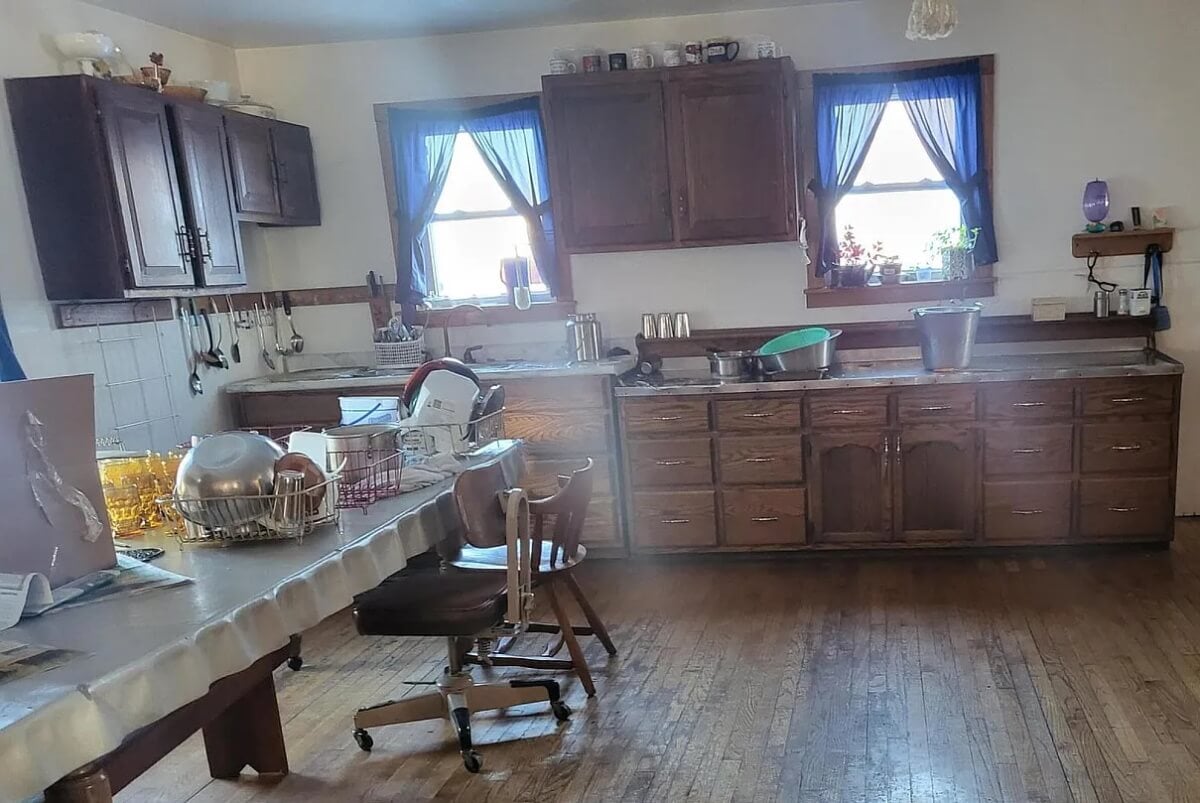
As it happens, I spoke with Jason Harward of the Mitchell Republic newspaper last week. He has also been on the story. Jason got out to the community last week, spoke to bishop Rudy Borntreger, and was able to find out what is going on. From the article intro (“After a decade, South Dakota’s Amish are moving on”):
TRIPP, S.D. — About two miles west of Tripp, past a yellow warning sign with a horse and buggy and down a dirt road muddied from snow melt, sit a set of red barns and white homes, all with green roofs.
The structures dotting the rolling landscape house South Dakota’s lone Amish community, a nine-family, 60-person settlement that started in 2010, widely believed to be the religious group’s first venture into South Dakota.
But come this summer, they’ll be gone — some of their homes are listed on Zillow, and an auction is scheduled for April 28.
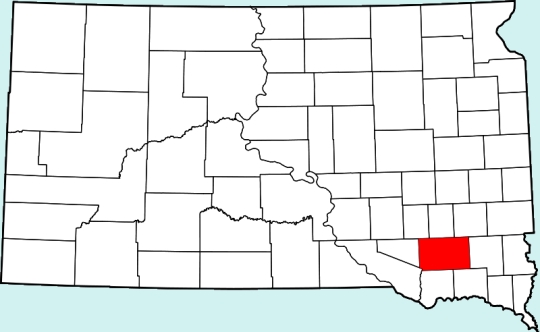
Why are the Amish leaving?
When an Amish community doesn’t work out, the natural question is to ask “why”. Sometimes it has to do with challenges making a living in an area. In some cases, distance plays a part. As for why the Tripp community is coming to a close, here’s an explanation from Rudy Borntreger:
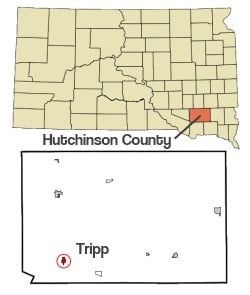
“We wanted there to be an Amish community here, but seems like everybody Amish is more from Ohio or Pennsylvania, where there are more trees,” Rudy Borntreger, the community’s bishop, or elder, explained. “I think it’s so open, nobody wants to join us. Now more people decided to move back to Iowa and Minnesota, so kind of for unity’s sake.”
Though their time in the state will be cut short — and an aversion to technology, deep focus on family and generally reclusive nature limited their socializing potential — they left a lasting impression on the Tripp area and beyond, community members say.
“We love ‘em here,” Marion Ymker, the owner and manager of Ymker Greenhouse and Landscaping in Armour, where some of the Amish have worked for about a decade, said. “We’re disappointed they’re moving.”
That feeling is mutual.
“Good country. Good area. Good friends,” Borntreger said, speaking in a tone of finality on his time in South Dakota, where he’s spent around half of his adult life. “Lot of things change in 13 years. Most businesses in Tripp all changed hands. Old friends passed on.”
When Amish communities “fail”, sometimes there can also be non-public issues going on (e.g., “church troubles”). And according to one non-Amish source cited in the article, there may have been some of that here, as far as church members getting along with the bishop.

Ultimately, this community simply wasn’t able to attract enough other Amish to join them. And issues with ministry might have been a piece of that. If so, was it a bigger piece than what the bishop himself suggests, that is, familiar landscapes and familial ties in other places? That would be hard to determine conclusively, as I suspect it would in many similar cases. In any case, after a 13-year run, it’s time to go back to more familiar pastures.

Most of this community came from the Tomah, Wisconsin settlement. Of the six founding families, Borntreger’s is the only that remained til now, with the community maxing-out in size at around 90 people. According to the article, Borntreger and others plan to re-settle in a different part of Wisconsin.
An Amish goodbye to South Dakota
Assuming they do actually leave, this will mean no Amish live in South Dakota (barring another settlement starting in the meantime). South Dakota will be removed from the list of states with an Amish population (and added to this list instead).
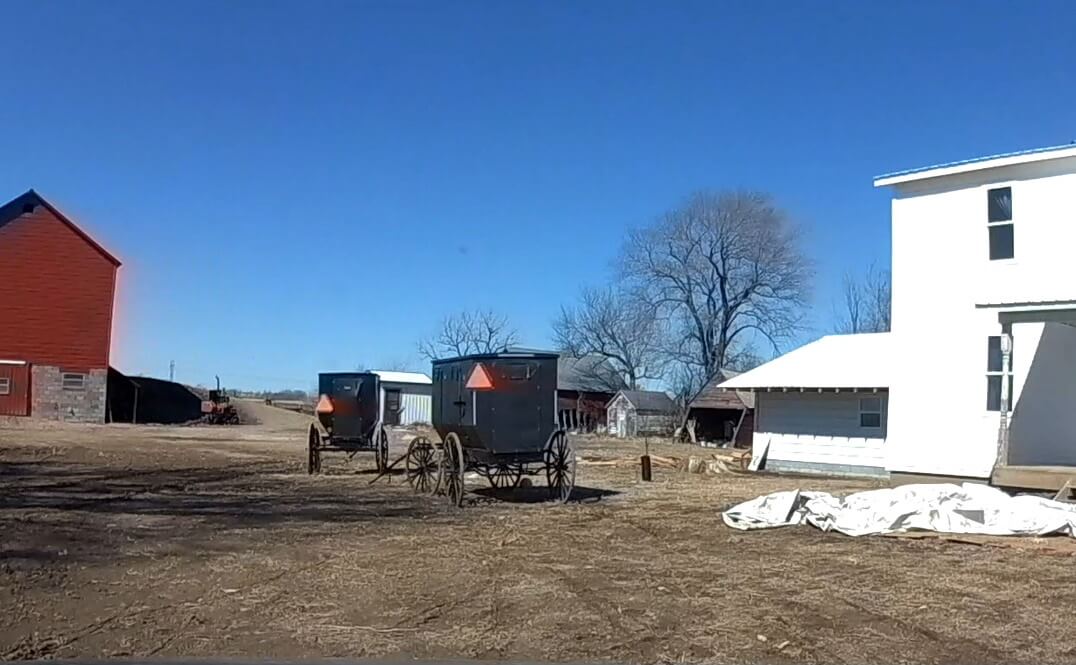
This has of course happened in the past in states with just a small Amish presence. One fairly recent example of a state losing its Amish population would be Washington state, home to a small Amish community from the late 1990s to mid-2000s.
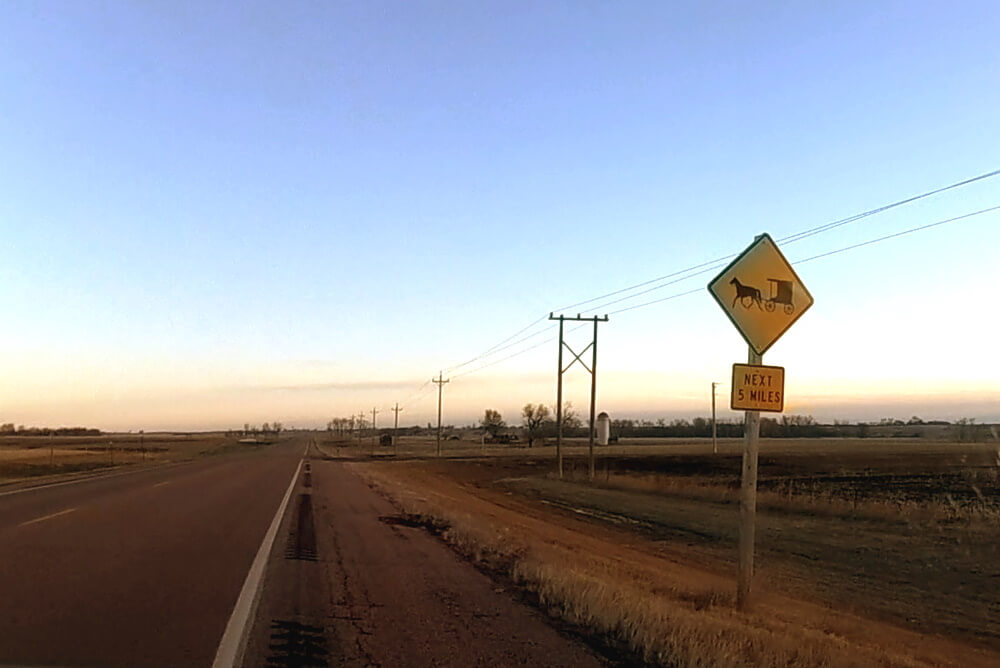
UPDATE: As mentioned as a possibility above, and more concretely commented on by Joe Donnermeyer below, the Amish appear to be establishing themselves in another location in South Dakota, in the area of Burke in Gregory County. In addition to Joe’s comment, I have now come across mentions of this area in two other places as well.
Sometimes it takes awhile for information about a new settlement to become more public. In some cases, a family or two moves to a new area, but fail to attract more to come join. A general guideline for “community” status is three households – or fewer if one of the households contains a member of the ministry (Amish historian David Luthy’s definition). I will post more info if/when it becomes available. But in any case, it may be that South Dakota doesn’t land on the list of states without an Amish community after all.



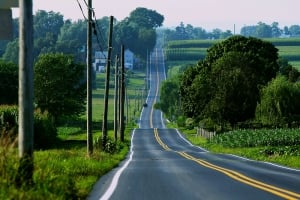
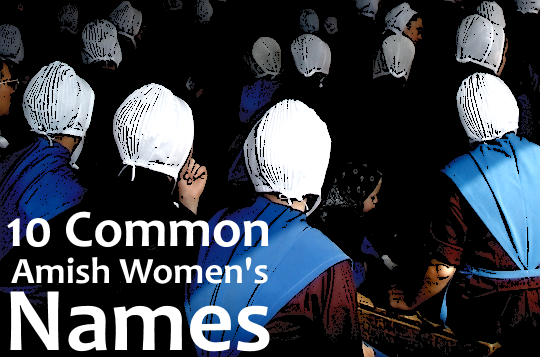

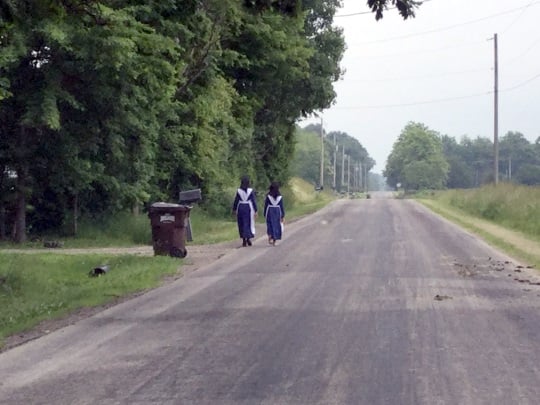


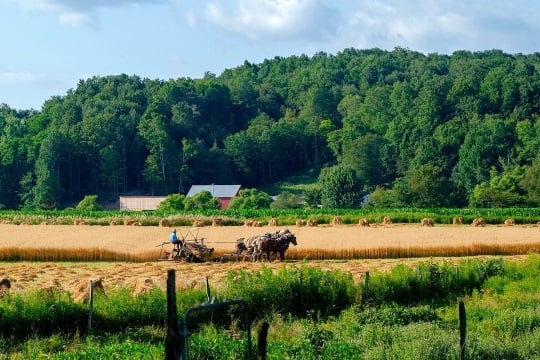
maybe still in South Dakota
The reasons cited in this blog are so typical, but who knows, a different set of Amish may return to the area someday. Also, there is a new South Dakota community to the west of Tripp, called Burke (founded in 2021). Maybe it will survive, but certainly, the exit out of Tripp may well affect the status of that community as well.
Burke, South Dakota Amish?
Thanks Joe, I am seeing other comments in a couple places about Gregory County (where Burke is located) getting a new community. I’ll add a small update to the post, pending futher info!
Thanks for the Update
Erik, thanks for the update.
As with most group decisions, there are often a multitude of reasons for a decision. Thanks for making that clear. Jim
I admire the reporting work that Jason Harward did on this to speak with the bishop and also get that info from another source. Again no one knows how much of it was this and how much that. On some level this community reminds me a bit of another one where a Borntreger is a bishop (or rather a BorntrAger) – the one in Bee County, TX. Also well off-the-beaten path, also has not grown much (roughly same size as this one). But that one has been around for nearly 25 years: https://amishamerica.com/texas-amish/
Where in Wisconsin?
Where in Wisconsin are the South Dakota Amish relocating? I recently bought an Amish farm in WI (house and buildings on 10 acres, the remaining acreage was sold to someone else as I could not afford it. I am helping one of the few remaining Amish in the community sell their property as well, by listing it on FB Marketplace. The seller is asking a very reasonable price. I had bought some other simple Amish properties but sold them to afford the one I just bought. I had let a young Amish couple stay in one until they resettled in another community. Unfortunately the Amish are leaving due to an internal problem. Fortunately there are Amish in nearby towns but I am sad to see them leave Arpin. but blessed to be able to buy a very affordable homestead. The community here splintered, some went to Cadott, some to Marion, etc.
Amish in WI.
Were in western Taylor Co. WI. Our area has soo many amish come to this area in the last 2 yrs. We have more then 100 Amish within 3 miles of our farm. They have come from; NY, MO. KY. There is pressure for us & English to sell to them…
Aw.
I wish they had Amish in every state.
just about every state
I loved Leana’s reply. I think the Amish have attempted at least one settlement (even if the attempt failed) in every state but Alaska, Connecticut, Hawaii, New Hampshire, New Jersey, and Rhode Island. I suspect that both Alaska and New Hampshire will witness an attempt before the end of this decade, however.
Amish in Alaska
On TikTok there is a young woman named Elise that lives with her family in Alaska. They moved from their colony, but still practice Amish ways.
I love that we have a community here in Mi by me.
Not Surprised!
Thanks for sharing this new info Erik but I am not surprised. Following your prior post of the 2 SD Amish homes for sale, and the comments from another reader pointing out that there were 3 additional homes for sale(not listed as Amish, but none of them had electricity and one clearly had a buggy parked outside), I definitely suspected that I might read this eventually. (2 of those 3 other houses are still on Zillow, they lie to the west of Tripp.) The community had 9 families so we still might see 3 other houses come up on Zillow. As for why the Amish are leaving, I’m sure we will never know the whole story but it seems like internal church issues played a role. Another reader commented on the other article, says he knows the Bishop, that the Bishop and his son’s were hard to get along with and all the houses except three were owned by the Bishop or his son’s. He also commented that 7 years ago 7 families moved out due to disagreements with the Bishop. 6 years ago they lost their milking contract. Families have come and gone, sometimes not even living there for a year. And they have alienated some of the locals over the years.
New Settlement
As for the new settlement in Burke(Gregory County) I wish them luck. This is an even more sparsely populated are than Tripp.
Hutterites
Interesting that South Dakota (and the upper Midwest as a whole) is core Hutterite territory but Amish seemingly steer clear from it. Even Mennonites in Canada love the prairies and can even be found as far as Northern Alberta.
I assume this means that the reasons why the settlement failed are not external.
good insight
Marcel’s insight is very good. The Amish were and are less successful in the Great Plains Regions of Canada and the US because of characteristics that are more associated internally with them than with Hutterites and Mennonites. Both of the latter groups arrived in the Great Plains from areas of what is now the Ukraine or parts of the Russian Federation, and with them came a more dry land style of agriculture, including new wheat varieties that did well in their new North American localities. The Amish came to the US much earlier, with a style of farming associated with the Rhine River Valley and then Pennsylvania, Ohio and other midwest localities that are much wetter. However, as the economic base of Amish settlements has shifted to sawmills, construction, furniture-making and other non-farm enterprises, the Amish success in the Great Plains has gone up in this century. Today, there are about 25 settlements in the Great Plains Region (from Manitoba to Colorado) and those numbers are likely to increase every year through the next several decades, even though some attempts will fail.
love everibody
love black people
Group session
I volunteer in a weekly class for people who battle drug and alcohol addictions, anger issues etc.My lesson was on honesty and I came across this story and incorporated it into the lesson. Thank you for this story. It helped in reinforcing the message in our lesson tonight.
The last families to move?
In the July 5, 2023, edition of The Budget newspaper, the scribe from Tripp, South Dakota (Rudy Borntreger) reported that one family had moved to Bethany, Missouri, two families had moved to Granton, Wisconsin, and one family had moved to Waverly, Kansas. All four were Borntreger families. In addition, he also wrote that his own family was planning to move to Granton, Wisconsin on June 28.
So, I’m wondering if these five families were the last of the Amish families living at Tripp, and now the Tripp, S. D., settlement is no longer.
Mass Amish Exodus from Randolph Mississippi
Swartzentruber Amish formed from a division in Holmes Co. OH, In 1913–1917. The bishop who broke away was Sam E. Yoder. The Swartzentruber name was applied later after bishop Samuel Swartzentruber who succeeded him. (Don’t know why there not called “Yoderites”). The Mississippi Swartzentruber are made up of only 3 genealogical families (Yoder, Hochstetler, Zook). And their farms are operated by tenants who are controlled by a minute number of landowners each holding 2 to 3 farms acquired from families who dispersed in the past.
Most landowners use modern irrigation systems, dig with Excavators. And use Heavy Equipment for their mill, lumber, furniture business, under the clause of English ownership.